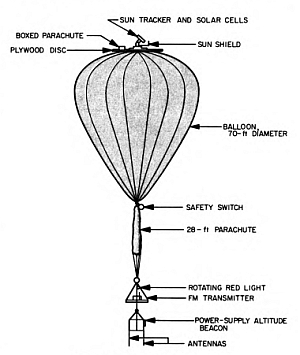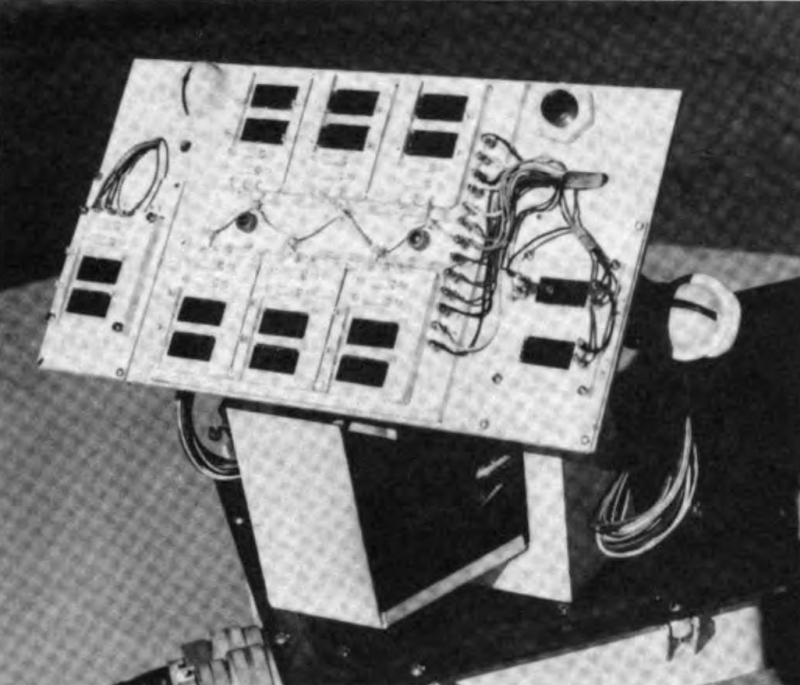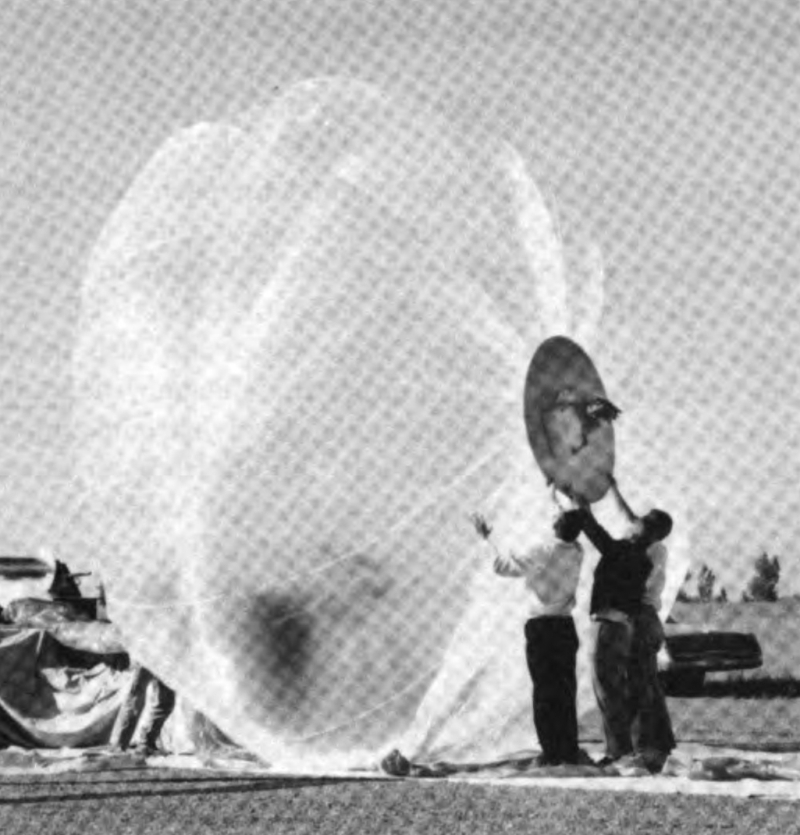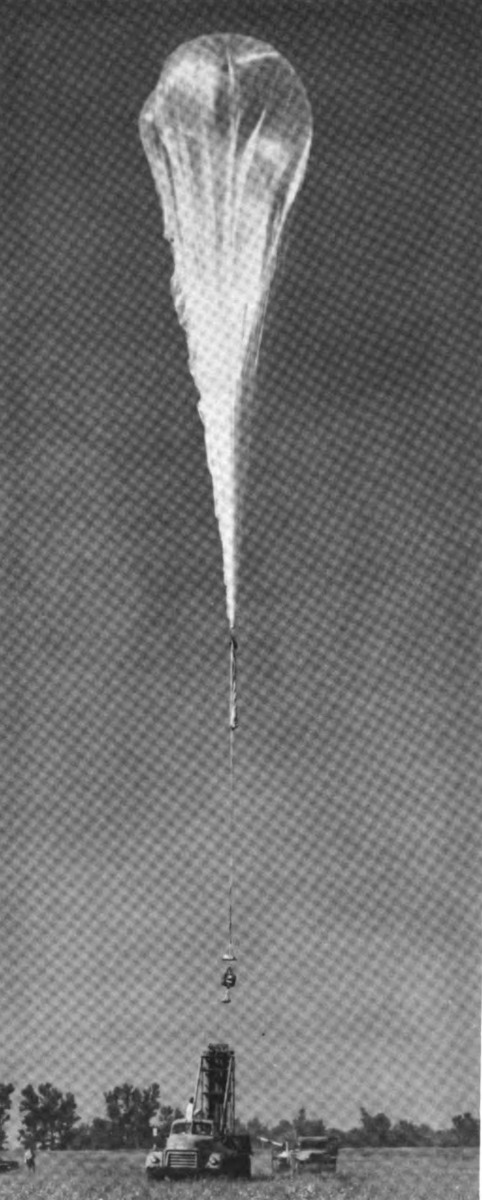Purpose of the flight and payload description
The purpose of the high altitude solar cell calibration program was to produce air mass zero (AM0) standard solar cells that could be used for accurately setting solar simulator intensities. The program was started in 1962 by the Jet Propulsion Laboratory, of the California Institute of Technology in Pasadena.
Since the output of solar cells is spectrally selective, the electrical power derived from solar cells depends on the total intensity and the spectral distribution of the light source: the Sun. Attempts were made to procure a laboratory light source which has the same spectral character and intensity as the Sun. However, such attempts have been complicated as different types of radiation sensing devices, such as pyrheliometers and thermopiles, have been used which can not be accurately calibrated on either a total intensity or spectral intensity basis. To overcome this was introduced the concept of flying cells on a balloon, to measure their output at altitudes, to recover the cells and to use them as reference standards. The calibrated standard solar cell is placed in the solar simulator beam, and the beam intensity is adjusted until the standard solar cell reads the same as it reads on the balloon.
Althought, some modifications were introduced over time, the main components of the balloon flight system were maintained along the entire program: a sun tracker, a helium-filled balloon, a telemetry system, and a battery power supply, as shown in the scheme at left (click for more detail). The sun tracker was mounted on the balloon apex, which is the most stable position of the balloon system. The telemetry transmitter and battery power supply, along with several instruments for measuring altitude, were suspended in a second gondola beneath the balloon. An electrical cable, incorporated into the balloon during manufacture, connected the top and bottom payloads.
The solar tracker was used to position the solar cell payload toward the sun, independent of balloon movements. The tracker was capable of movement in both elevation and azimuth to maintain an "on-sun" condition within +2 deg. A reflection shield attached to the solar tracker was used to prevent unwanted reflected light from reaching the solar cell payload. The tracker and associated electronics boxes were mounted on a plywood disk 6 ft in diameter, which, in turn, was bolted to the balloon top end fitting. The plywood disk permited the tracker to "float" on top of the helium bubble. Total weight of the upper payload was approximately 23 kg.
Details of the balloon flight
Balloon launched on: 6/13/1962 at 9:19 cdt
Launch site: University of Minnesota Airport, New Brighton, US
Balloon launched by: General Mills Inc.
Balloon manufacturer/size/composition: Zero Pressure Balloon General Mills - 130.000 cuft
End of flight (L for landing time, W for last contact, otherwise termination time): 6/13/1962 at 14:25 CDT
Balloon flight duration (F: time at float only, otherwise total flight time in d:days / h:hours or m:minutes - ): 6 h 40 m
Landing site: 80 miles S of launch site
The balloon was launched at 09:19 CDT on June 13, 1962 from the General Mills Balloon Flight Center in New Brighton, Minnesota. The balloon reached a maximum altitude of 77,000 ft at about 11:15 CDT and remained at this altitude for approximately 3 hr around solar noon. During this time, the short-circuit currents of the 14 solar cells flown were measured. Also measured were the temperatures of both the front and back sides of control cells mounted on the same heat sink as the other cells. The balloon began its descent at 14:25 CDT and made Earth impact at 16:00 CDT, about 80 mi south of the launching site. The solar-cell payload did not suffer any damage from either the flight or impact.
External references
- Solar-Cell power system testing Technical Report Nº 32-350 - JPL - Dec. 1962
- Space Calibration of Standard Solar Cells using high-altitude balloon flights Technical report 32-742 - Jet Propulsion Laboratory, California Institute of Technology
15658If you consider this website interesting or useful, you can help me to keep it up and running with a small donation to cover the operational costs. Just the equivalent of the price of a cup of coffee helps a lot.





